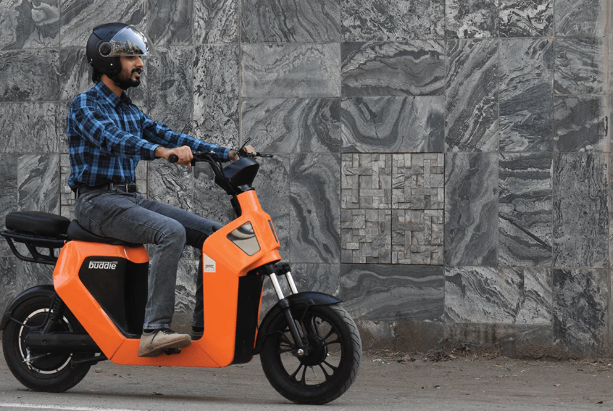Government subsidies played a vital role in the early adoption of EVs in the Indian market. A question that often arises is if they have been beneficial or a hindrance in driving sales. Mr. Pritesh Mahajan, Co-founder of Revamp Moto tells us his views.
The Indian electric vehicle market has experienced a remarkable surge catalyzed by growing concerns about climate change and air quality. As more consumers become environmentally conscious and look for sustainable transportation options, the shift from traditional internal combustion engine (ICE) vehicles to cleaner and greener electric alternatives has accelerated. Government incentives and subsidies have played a pivotal role in driving this transition, making electric vehicles an attractive choice for many. However, recent reductions in these incentives have raised questions about their impact on the sales of electric vehicles in India.
The Rise of Electric Mobility in India
India’s journey toward electric mobility gained significant momentum with the Faster Adoption and Manufacturing of Hybrid and Electric Vehicles (FAME) scheme, introduced in 2015. This initiative aimed to foster the adoption of electric and hybrid vehicles by providing financial incentives and infrastructure support. Under FAME, substantial subsidies were extended to electric vehicle manufacturers and buyers, significantly reducing the upfront cost of EVs and making them an appealing option for the masses.
These incentives triggered a surge in the popularity of electric two-wheelers, three-wheelers, and cars. The burgeoning middle class, urbanization, and heightened environmental consciousness fueled the demand for electric vehicles. Consequently, both domestic and international automakers began expanding their electric vehicle portfolios to meet this burgeoning demand.

The Impact of Government Subsidies on EV Sales
Government subsidies encompassed incentives for manufacturers and tax benefits for buyers, making EVs more affordable and environmentally friendly. They played a pivotal role in reducing the initial purchase cost, which often proves to be a key consideration for potential EV buyers. As a result, EVs became a cost-effective and green alternative to traditional vehicles.
Incentives for manufacturers further prompted investments in electric vehicle research and development. This led to the launch of a variety of electric models catering to various consumer needs. The market diversified, offering choices for different segments of the population, ranging from compact city cars to electric scooters and electric rickshaws.
Challenges Emerge as Subsidies Decrease
While the Indian government’s push for electric mobility was commendable, sustaining these subsidies became a challenge. In April 2019, the government revised the FAME scheme, giving rise to FAME-II. This revised scheme offered more selective subsidies, with a particular focus on electric buses, two-wheelers, and three-wheelers.
One primary reason for this change was the fiscal burden associated with maintaining subsidies at the same rate. In emerging economies like India, the government’s finances need to strike a balance between promoting electric mobility and fiscal prudence. Consequently, direct incentives for electric cars, which tend to have higher costs, were scaled back.
Recently, the Ministry of Heavy Industries announced changes that will reduce subsidies for electric two-wheelers. This sudden reduction in subsidies has been a significant point of discussion and contention within the industry. According to the Society of Indian Automobile Manufacturers (SIAM), the abrupt reduction in subsidies could lead to a substantial decline in electric vehicle adoption. Insights from a prominent industry organization underscore the potential ramifications of reduced subsidies on EV sales.
The report indicates that stakeholders in the electric vehicle industry are seeking more clarity and transparency regarding the subsidy reduction and its implications. This suggests ongoing discussions and concerns within the industry regarding the subsidy changes. Clear communication and understanding will be pivotal in addressing these concerns and maintaining the momentum of India’s electric mobility journey.
The Impact on EV Sales
Reduced government subsidies did indeed impact the electric vehicle market in India, particularly affecting electric cars. The incentives’ reduction led to a decrease in the demand for high-priced electric cars since the reduction in incentives had a more substantial impact on their overall cost.
However, the two-wheeler and three-wheeler segments proved more resilient. The availability of affordable electric scooters and rickshaws, along with their utility in urban areas, made them a popular choice for both consumers and fleet operators. These segments continue to thrive due to the need for clean and efficient urban mobility solutions.
A Shift in Strategy
The decrease in government subsidies has spurred the industry to explore alternative strategies to promote EV adoption. Manufacturers are focusing on optimizing production costs, enhancing technology, and considering partnerships with other sectors, such as ride-sharing companies. These endeavours aim to make EVs more accessible and affordable without depending heavily on direct government incentives.
Moreover, India’s charging infrastructure is expanding, with both public and private players investing in charging stations across the country. This expansion addresses one of the key concerns of potential EV buyers: range anxiety. An improved charging infrastructure is expected to further drive EV adoption.
However, this in no way has not halted the industry’s growth. The electric two-wheeler and three-wheeler segments continue to thrive, propelled by affordable models and the need for sustainable urban mobility. As the sector continues to focus on innovation, collaboration, and infrastructure development, electric vehicles are likely to remain a vital part of India’s transportation landscape, even with evolving subsidy structures.

